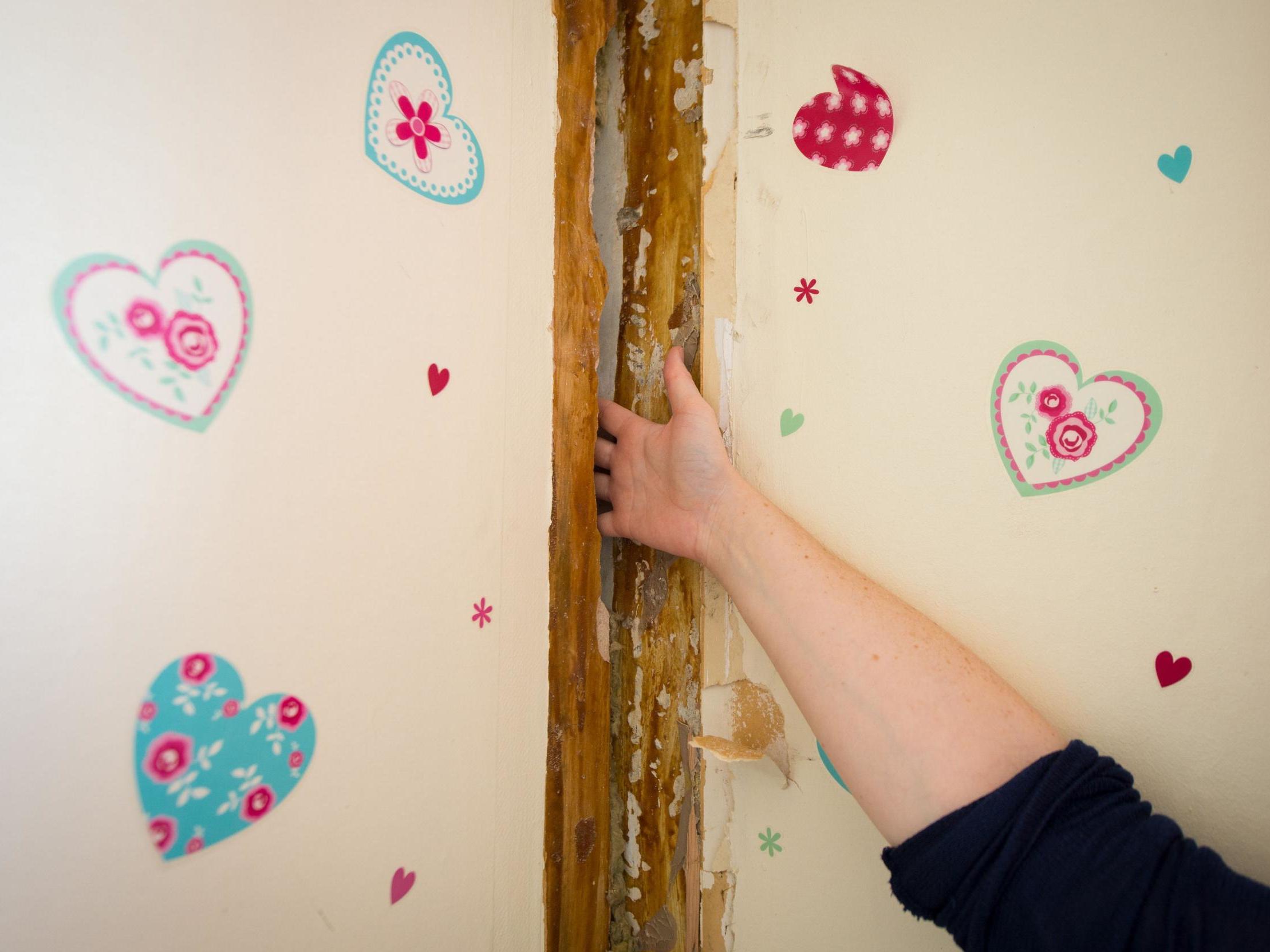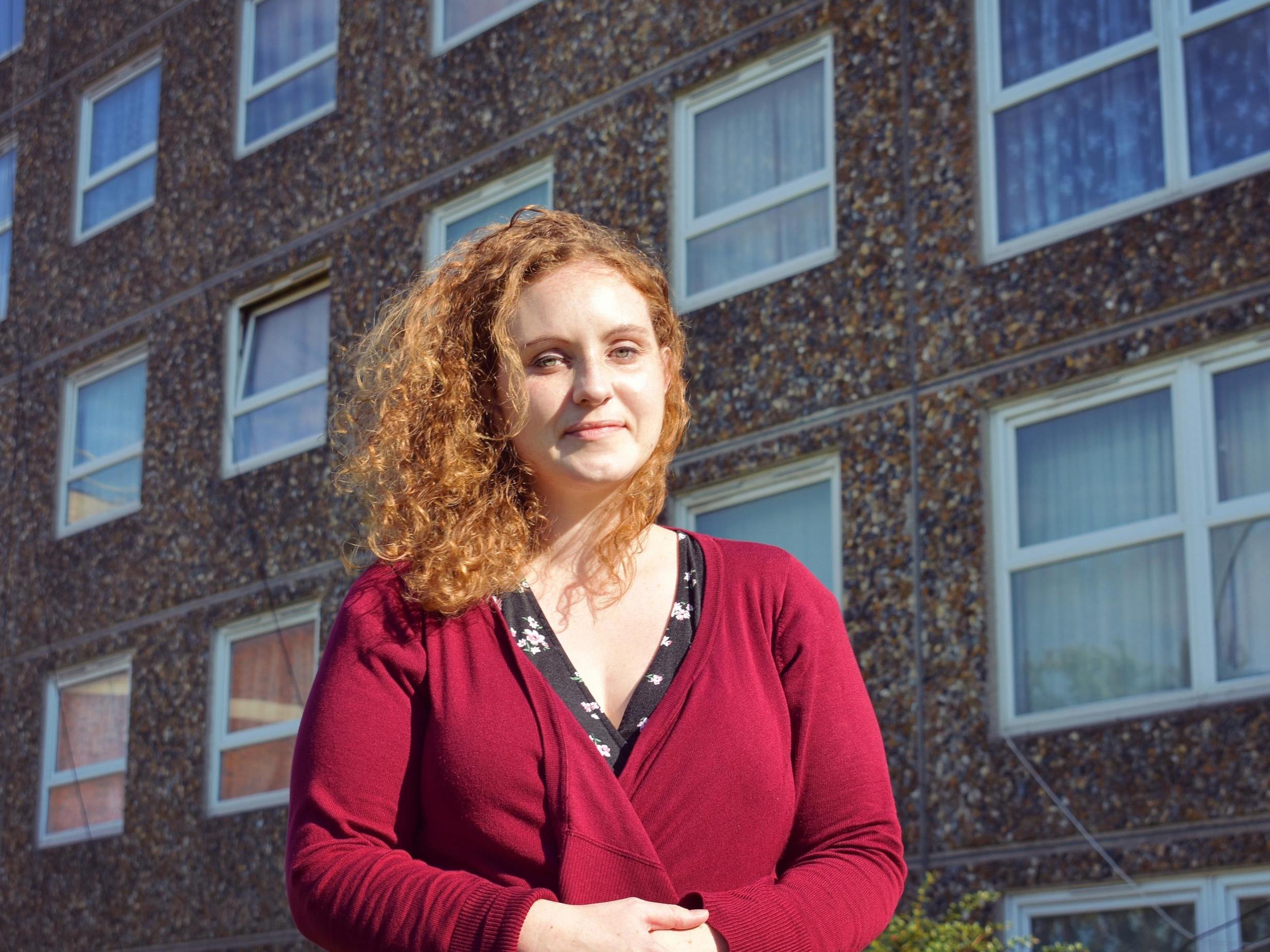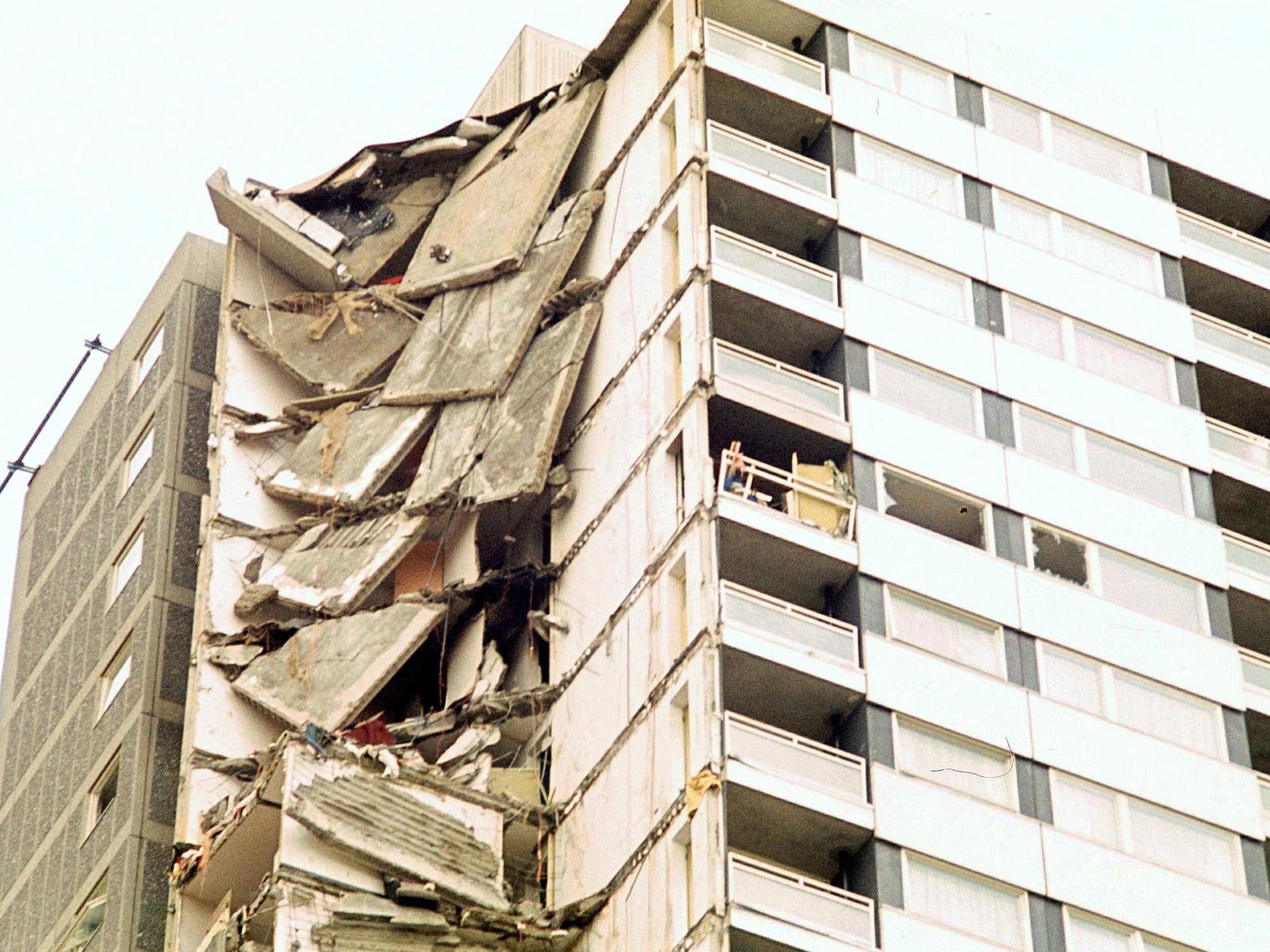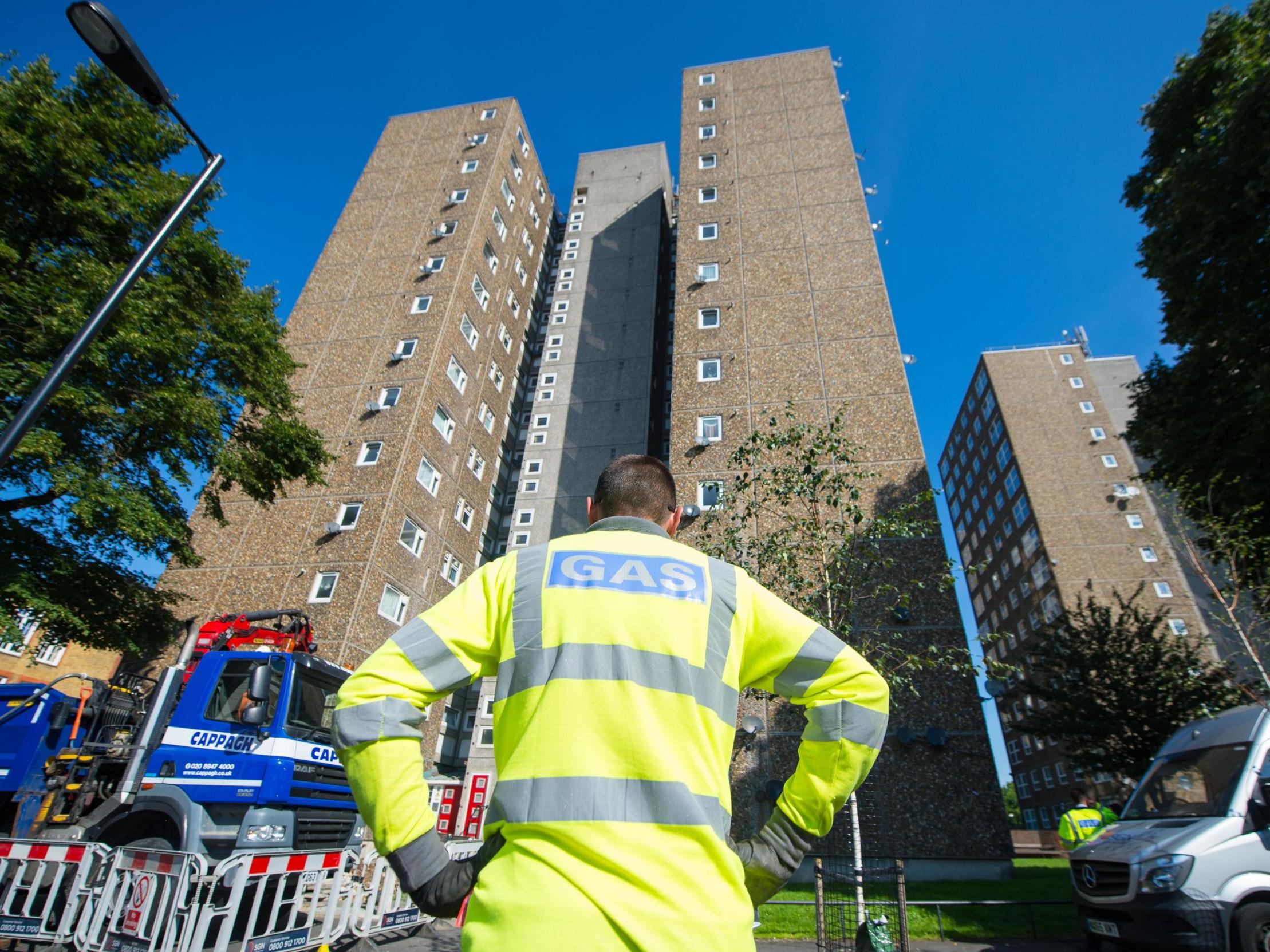Hundreds of tower blocks across UK at risk of collapse, say experts
Exclusive: Government urged to investigate ‘bigger issue than Grenfell’ as defects identified in more than 41,000 flats
Your support helps us to tell the story
From reproductive rights to climate change to Big Tech, The Independent is on the ground when the story is developing. Whether it's investigating the financials of Elon Musk's pro-Trump PAC or producing our latest documentary, 'The A Word', which shines a light on the American women fighting for reproductive rights, we know how important it is to parse out the facts from the messaging.
At such a critical moment in US history, we need reporters on the ground. Your donation allows us to keep sending journalists to speak to both sides of the story.
The Independent is trusted by Americans across the entire political spectrum. And unlike many other quality news outlets, we choose not to lock Americans out of our reporting and analysis with paywalls. We believe quality journalism should be available to everyone, paid for by those who can afford it.
Your support makes all the difference.Tower blocks across the UK, home to an estimated 100,000 people, have a systemic structural flaw that puts them at risk of collapse, housing experts have told The Independent.
In the wake of the Grenfell disaster, safety problems have come to light at towers built using the Large Panel System (LPS) method during the 1960s and 1970s, which house more than 41,000 flats in cities up and down the country.
The flawed construction method has left cracks in some flats wide enough to allow residents to slide their hands in between the walls.
It also leaves them at risk of complete collapse in the event of a fire or gas explosion – something that already happened at one block in the 1960s.
Structural defects have been discovered at LPS blocks in Leicester, Rugby, Portsmouth and two estates in London over the past year. Hundreds of council tenants and leaseholders are in the process of being moved for their own safety.
Yet the defects and safety hazards – including the risk of a building collapse – are likely to be even more widespread, according to housing experts.
Documents seen by The Independent show at least 575 tower blocks built using the LPS method are still standing across the UK – just over 41,000 flats.
Tower Blocks UK, a campaign and research group, is now calling for the government to set up a nationwide safety audit, ensuring inspections are carried out at all LPS tower blocks in the UK.
“This is an even bigger issue than Grenfell because more tower blocks are affected by these structural problems than by cladding problems,” said Sam Webb, a retired architect who is the co-founder of Tower Blocks UK. “The government needs to take responsibility for this as a matter of urgency.”

The campaign group is urging the government to ask the Ministry of Housing, Communities and Local Government or the Building Research Establishment (BRE) to lead the inspections.
“The government needs to carry out a safety audit to identify all the large panel system tower blocks, and make sure qualified experts check whether or not these blocks are safe,” said Frances Clarke of Tower Blocks UK.
“We have the face up to this because residents can’t be left at risk living in potentially unsafe buildings,” she added.
Labour MP John Healey, the shadow housing minister, also demanded action. “After Grenfell, the safety of these high-rise blocks is a national crisis so it must be the job of national government to get the work needed done,” he said.
“Government ministers must now ensure that all large panel system blocks are investigated to see that they meet the safety standards that residents expect, and any test results are published so that residents have full information about the safety of their homes.”
Last August tests commissioned by Southwark Council showed four LPS blocks at the Ledbury Estate in south London at risk of collapse. Residents there had complained and filmed the cracks between the walls of their flats.
Danielle Gregory, 32, was one of those able to place her entire hand through the widening cracks in the walls of her 12th floor home.
“It was frightening to realise other people had these same gaps between walls,” said Ms Gregory. “After Grenfell I realised these flats weren’t secure anymore and couldn’t stop a fire from spreading.”

Southwark Council is yet to make a final decision on whether to demolish the almost empty towers at the Ledbury Estate, but a majority of residents voted in favour of strengthening work and refurbishment during the consultation process.
Gas was removed at the four affected blocks last year, and council officers are busy trying to find suitable homes for the final few residents.
Leicester City Council has decided to demolish the 23-storey Goscote House once residents are moved out of the LPS block because of fears for its “long-term structural integrity”. Last month a Rugby Borough Council report recommended two LPS blocks at Biart Place were of “poor build quality” and should be brought down.
Council bosses at Portsmouth and Haringey have yet to decide whether LPS blocks they deemed unsafe earlier this year should be demolished or strengthened.
All these buildings share the same basic design: the LPS technique popular with councils in the 1960s as a way of getting high-density housing up in a hurry. Factory-made concrete panels were stacked on top of each other, then held together with bolted joints.
Fears about the flimsiness of this method date back to the disaster at Ronan Point in east London in 1968. A gas cooker explosion at a flat inside the LPS block led to the collapse of the entire south-east corner of the building. Four people were killed and 17 others injured.

Arnold Tarling, a building surveyor who has examined LPS blocks across London, believes “fundamental” structural flaws means the risk of collapse remains in all LPS blocks.
“It’s like a house of cards,” Mr Tarling explained. “The cards were stacked up and held together by a bit of simple bracing work. It’s not just the risk of gas explosion like Ronan Point. A serious enough fire in a LPS building could result in collapse. The floor slabs would expand and push out the external wall panels and things would break up quite quickly.”
“Strengthening work isn’t viable with these blocks,” he added. “The flaws are so fundamental”.
Hannah Brack, an independent housing researcher, has gathered evidence showing 575 tower blocks across Britain were built using the dubious LPS technique. Documents she shared with The Independent show these blocks still stand in every major city in the UK - from Belfast down to Brighton.
“This a major national problem,” says Ms Brack. “There could be at least 100,000 residents living in blocks built using LPS construction methods and potentially at risk.
“The government needs to help local authorities come up with a plan to deal with it. These were flats built using the very shoddiest of methods. Councils just don’t know exactly what they have on their hands and what to do with them now.”
Both Mr Tarling and Ms Brack have been told by several local authorities they no longer hold a complete record of building work at their LPS tower blocks. This means it isn’t clear which towers have undergone repairs in an effort to strengthen them.
“It’s a mess,” says Mr Tarling. “The government needs to find out where the blocks are, what state they are in, and start facing up to the problem. You can’t leave residents in potential danger.”
A spokeswoman for the Ministry of Housing, Communities and Local Government told The Independent that the department held its first “forum” last week to discuss the LPS tower block problem with local authority representatives.
“Building owners are responsible for checking their properties and we have given councils and housing associations advice on checking the structural safety of buildings which use large panel systems,” said the government spokeswoman.

The Local Government Association (LGA) confirmed the meeting had taken place but could not say how many council representatives attended.
“The issues that building owners face with LPS buildings are complex and technical ones,” a LGA spokesman explained. “They require expert advice on what to do and the LGA is not placed to do that. We have therefore been pushing the government to provide that advice.”
For now, however, there remains nothing to compel councils to inspect their housing stock.
The emerging safety crisis has the potential to make the nation’s housing shortage even more intense. If more blocks are found to be unsafe, how do councils – overwhelmed by huge waiting lists for social housing – provide affected residents with affordable places to live?
Ms Gregory, the tenant who helped discover the cracks at Ledbury Estate, now lives at a nearby council home with her husband and three daughters. She leads a local campaign fighting to make sure the estate is not doomed to a developer-led regeneration scheme.
“These kinds of structural problems could affect a lot of people across the country,” says Ms Gregory. “If a massive safety problem ends up leading to a massive loss of social housing, then it’s a kind of double punishment.
“My worst fear is all these (LPS) estates will eventually be demolished and replaced with mainly private apartments,” she adds. “After Grenfell and all the concern about the terrible housing inequality we have, what kind of response it that?”
Another difficulty remains: how big a say should residents get in deciding whether LPS blocks found to be unsafe can be saved and strengthened?
In June, two blocks on the Broadwater Farm estate in north east London were found to be structurally unsound and at risk of collapse. Haringey Council told tenants and leaseholders at Tangmere House they must be out of their flats by the end of this month, followed by the inhabitants of Northolt Tower.
Rev Kwaku Frimpong-Manson, a community leader who has lived in the same third-floor flat at Tangmere House since 1991, will soon be moving off the estate to a council flat elsewhere in the borough.
“It’s been very stressful time,” said Rev Frimpong-Manson. “Broadwater Farm has meant everything to me so I will miss it. But, like everyone else, I’m worried for my safety.”
“I think these two buildings will probably need to be demolished,” he added. “I just hope the rest of Broadwater Farm has a bright future.”

Haringey Council has estimated it would cost £28m to strengthen and refurbish the two unsafe LPS blocks at Broadwater Farm, and would prefer to demolish them both and build new homes instead.
Jacob Secker, secretary of Broadwater Farm Residents’ Association, would rather the blocks were saved. He wants a ballot giving residents the option of voting for strengthening work, and the right to return after repairs are done.
“If there was a scenario where you had all these wonderful new council homes, I suppose I would be less opposed to demolition,” said Mr Secker. “But local authorities never seem to have the funding to rebuild their estates with new council housing.”
Despite all the faults of the system-built council tower blocks of the 1960s, the era was full of big ambitions for social housing. Today, expectations are depressingly low.
“A lot of council residents, understandably, just don’t believe they’re going get anything as good elsewhere,” said Ms Clarke, of Tower Blocks UK.
“But everyone has the right to housing that is both safe and affordable. We shouldn’t have to compromise on safety because of a shortage in affordable housing.”

Join our commenting forum
Join thought-provoking conversations, follow other Independent readers and see their replies
Comments